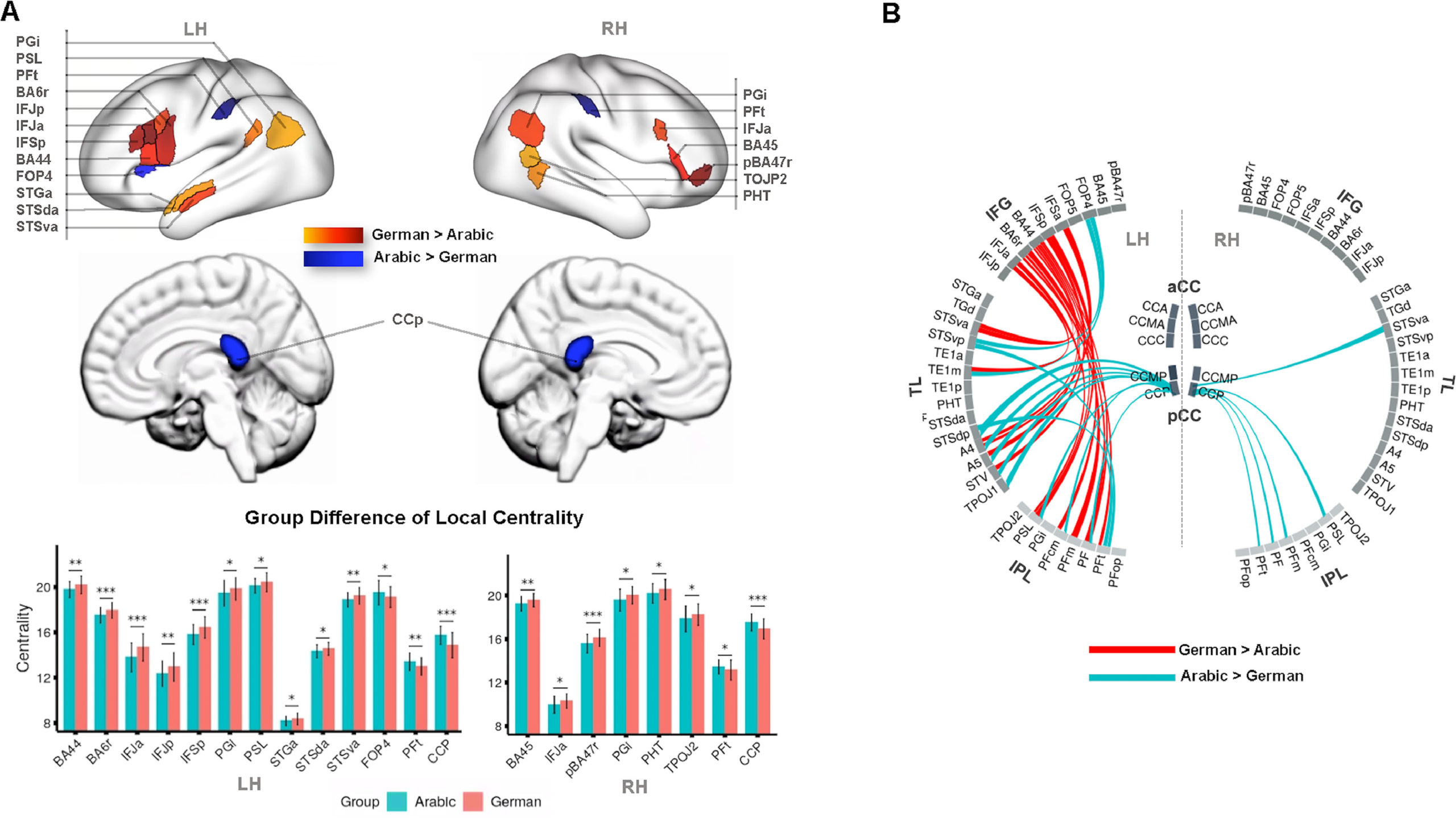 Data displayed in diagrams and graphs showing the impact of native language on connectivity between different regions of the brain. Credit: Science Direct / CC BY-NC-ND 4.0
Data displayed in diagrams and graphs showing the impact of native language on connectivity between different regions of the brain. Credit: Science Direct / CC BY-NC-ND 4.0Scientists have found evidence using neuroimaging that the native language people speak may affect the way that their brains are wired.
Researchers from Max Planck Institute for Human Cognitive and Brain Sciences in Leipzig analyzed and compared the brain scans of native Arabic and German speakers. The languages were selected for the reason that they are significantly different.
Their results indicate the native language of an individual can influence the connectivity between areas of their brains.
The study
The study was carried out by Xuehu Wei, Helyne Adamson, Matthias Schwendemann, Tomás Goucha, Angela D. Friederici, and Alfred Anwander, the latter of whom is a notable neuroscientist and connectome researcher.
The team used a magnetic resonance imaging (MRI) machine to scan the brains of two groups of 94 native Arabic and German language speakers.
According to the researchers, German is an “Indo-European morphosyntactically complex language,” whereas Arabic is a “Semitic root-based language”.
To control for other variables like educational level, social environment, genetic heritage, and nutritional status, the researchers tried to select participants with similar attainments in education, as well as matching by age, gender, and health.
By using a technique called diffusion-weighted imaging, the scientists were able to examine the connectivity between brain areas. The data showed that “axonal white matter connections of the language network adapt to the processing demands and difficulties of the mother tongue.”
„Vive la différence!“ The language we speak shapes the connectivity in our brain and influences the way we think!
Native language differences in the structural connectome of the human brain.
Now published #OA: https://t.co/N3Hf5pX6xx pic.twitter.com/PpV5VaKdi5
— Alfred Anwander (@AlfredAnwander) March 10, 2023
Native language shapes brain connectivity
By comparing the brain scans of the two linguistic groups, the researchers found that “German native speakers exhibited stronger connectivity in an intra-hemispheric frontal to parietal/temporal dorsal language network, known to be associated with complex syntax processing.”
As the researchers noted, the syntactic processing of German, which is due to the free word order and greater dependency distance of sentence elements, may have contributed to this link.
On the other hand, “Arabic native speakers showed stronger connectivity in the connections between semantic language regions, including the left temporo-parietal network, and stronger inter-hemispheric connections via the posterior corpus callosum connecting bilateral superior temporal and inferior parietal regions.”
Anwander, said that the “relatively complex semantic and phonological processing in Arabic” could be a relative factor in the way Arabic speakers’ brains are wired.
German native speakers showed stronger connectivity in an intra-hemispheric language network, as shown by network-based statistics.
Brain connectivity is modulated by the environment during childhood, which influences the processing and cognitive reasoning in the adult brain. pic.twitter.com/NLOobX4pi4
— Alfred Anwander (@AlfredAnwander) March 10, 2023
In their conclusion, the scientists noted that their “results provide evidence for the modulation of the structural language network in the human brain by the demands of one’s native language.”
“In the cognitive domain, these findings are essential for our general understanding of the interaction of environment and behavior in shaping the human brain,” the researchers summarized.
“The language we speak shapes the connectivity in our brain and influences the way we think!” posted Alfred Anwander on Twitter, with accompanying diagrams from the research paper.

 1 year ago
65
1 year ago
65











 English (US)
English (US)